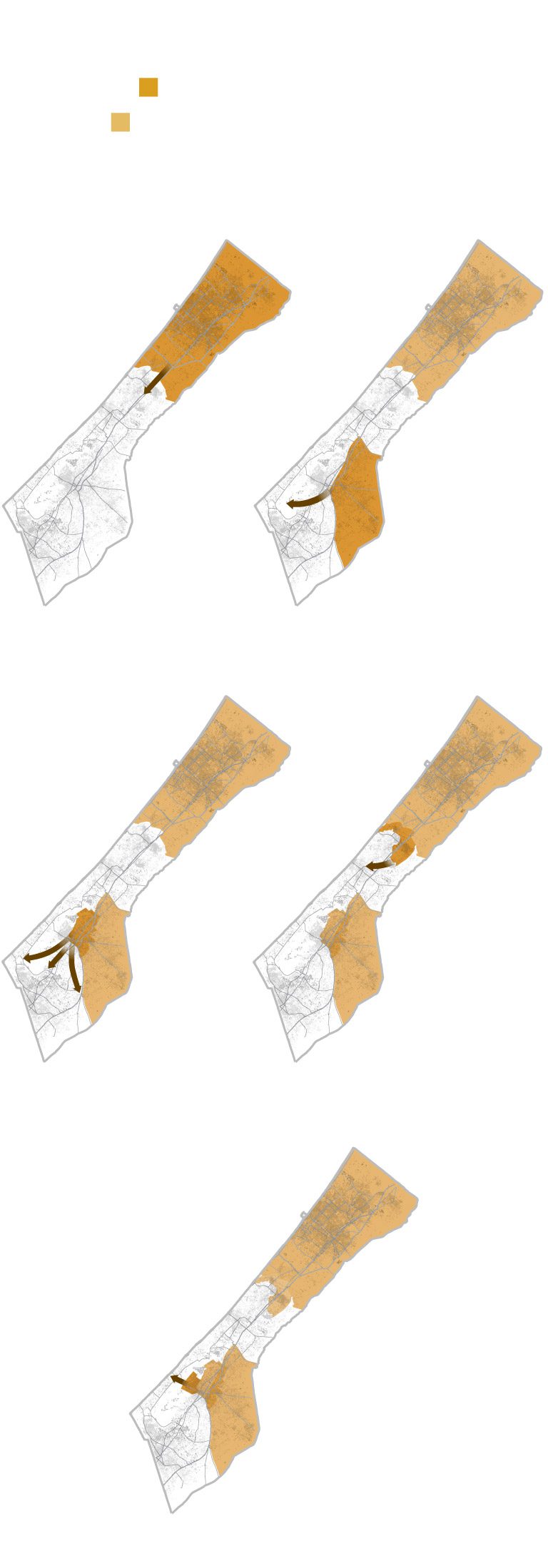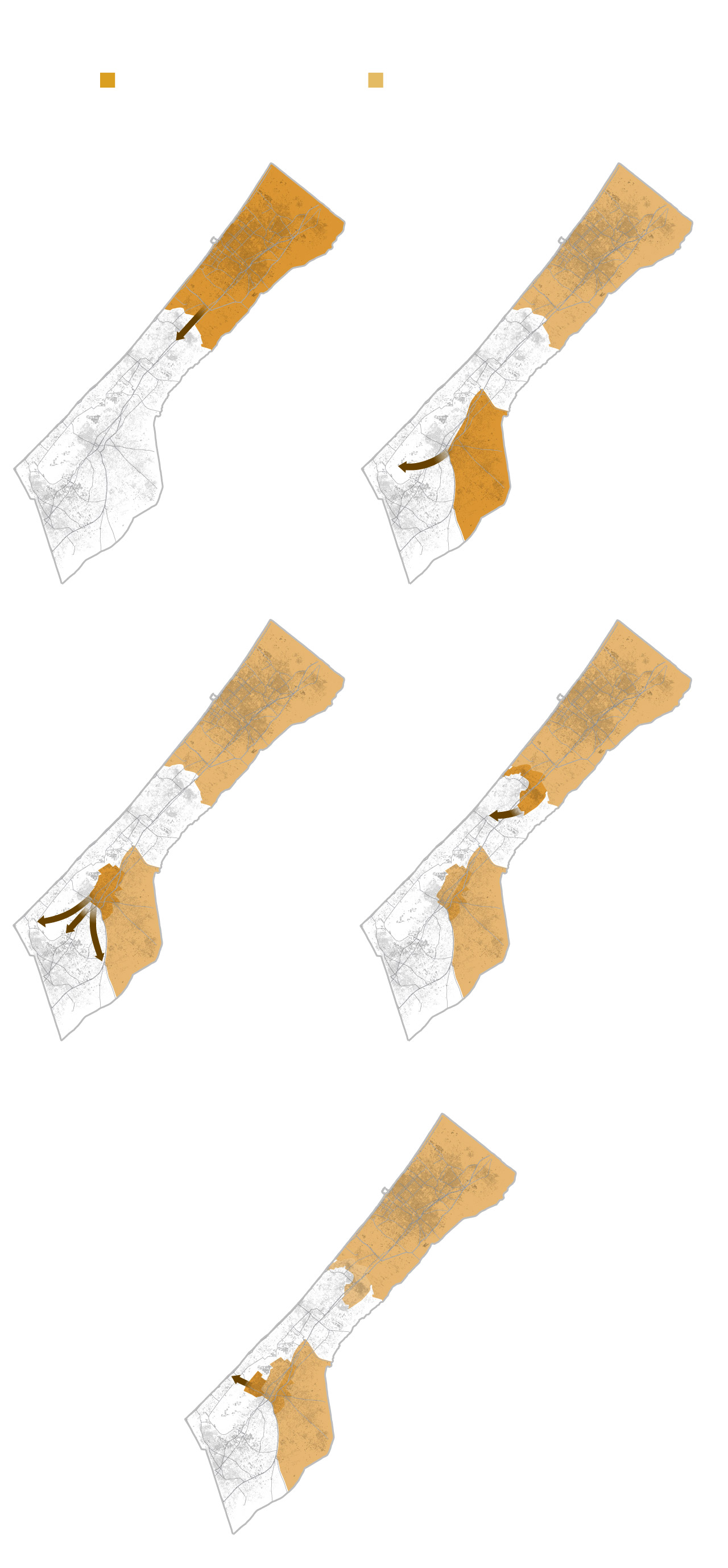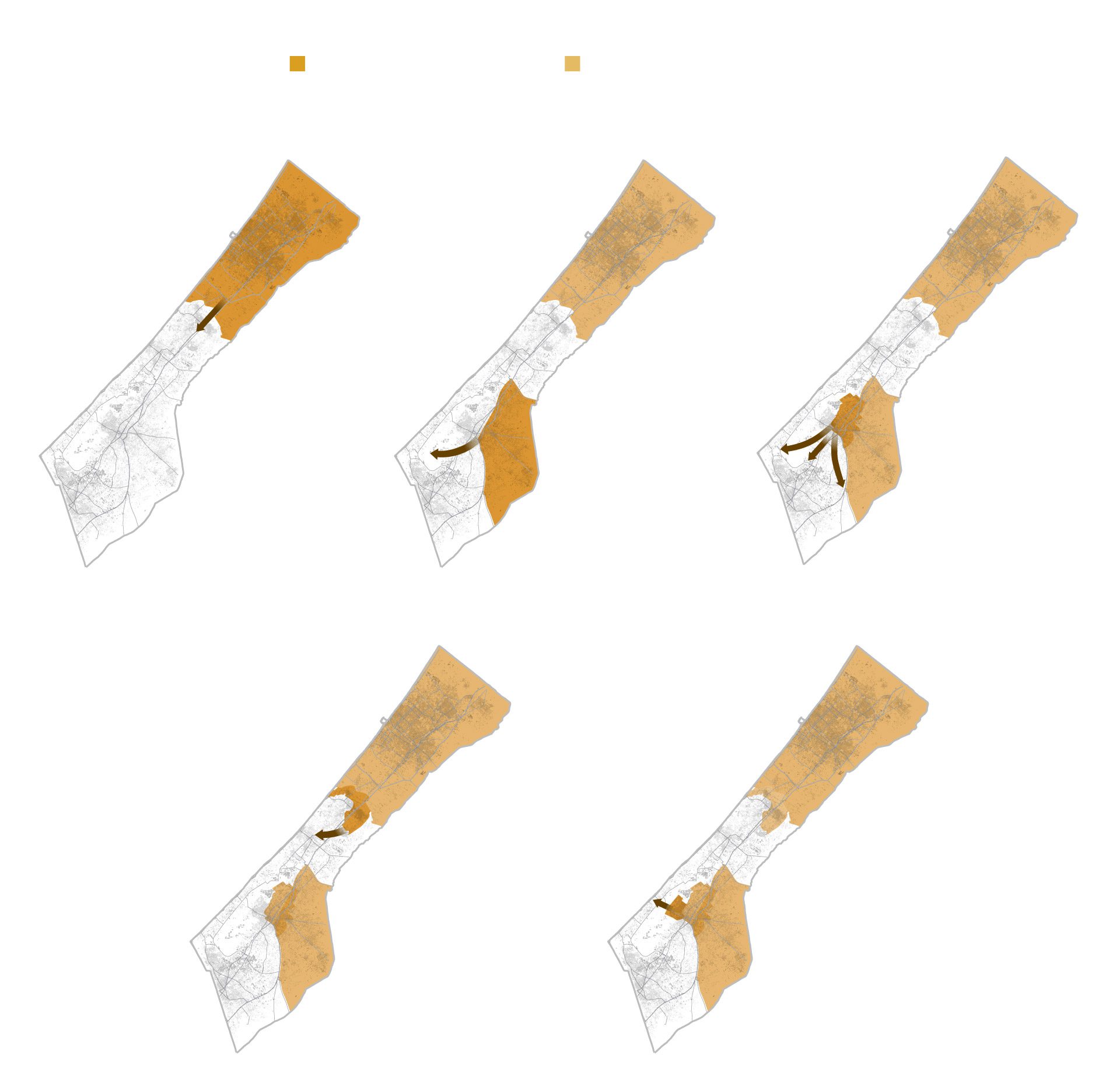Aid workers and humanitarian organizations have warned that Rafah is already dangerously crowded with civilians who have been displaced at least once, many of whom are sick or on the verge of starvation. They added that further conflict in the region could risk causing significant damage.
“The loss of life we would face if Israel were to push deeper into Gaza would be enormous,” said Bob Kitchen, vice president for emergencies at the International Rescue Committee, a humanitarian relief organization working in Gaza.
Nearly nine out of every ten Palestinians in Gaza have been displaced
Rafah’s population has swelled to “at least” 1.4 million people, Juliette Touma, communications director at the United Nations agency for Palestinian affairs, UNRWA, wrote in a letter. “This is five times the population before the war,” Touma said of Rafah, which had an estimated population of 280,000 before October 7.
Israeli officials did not specify what their plans for Rafah look like. The country's military has already carried out strikes in the area, including an airstrike that struck near the city's Kuwaiti Hospital in December, killing at least 18 people, according to hospital staff.
The war in Gaza has radically reshaped the demographic composition of the Strip. Nearly nine in ten people living in Gaza are now displaced, according to UN estimates, while WHO Director-General Tedros Adhanom Ghebreyesus said on Wednesday that “more than 100,000 Gazans have either died, been injured or are missing and are presumed missing.” “They died.”
Before October 7, Gaza City in the north was the most populated part of the Strip.
- On October 13, six days after the Hamas-led attack on Israel that sparked the start of the war, Israel ordered the evacuation of more than a million people living in areas above the wetlands of the Gaza Valley. Many of them took refuge in Khan Yunis, the second largest city in the Gaza Strip, in the south.
- At the beginning of December, Israeli authorities ordered Palestinians in Khan Yunis to move to new areas while they conducted military operations in the city.
- More than half of Gaza's total population is now believed to be in Rafah, where many live “in makeshift buildings, tents or in the open,” said Jens Laerke, spokesman for the United Nations Office for the Coordination of Humanitarian Affairs (OCHA). ), on Friday, adding that the city had become a “pressure cooker of despair.”

Schedule for evacuation calls
Previously under eviction

Schedule for evacuation calls
Previously under eviction

Schedule for evacuation calls
Previously under eviction

Schedule for evacuation calls
Previously under eviction
A worsening humanitarian crisis in Rafah
While Rafah lies on the border with Egypt, humanitarian groups have warned that the amount of aid crossing the border is nowhere near enough to meet the needs of an increasingly desperate population.
“People in Gaza risk dying from hunger just miles from trucks full of food,” said Cindy McCain, head of the World Food Programme. he said in a call for new action To allow more trucks to enter Gaza.
One Palestinian aid worker, who spoke on condition of anonymity because he was not authorized to speak publicly, wrote in a letter that the widespread use of tents reminded him of stories his grandfather told him about the living conditions of refugees after the 1948 Israeli-Arab War. The aid worker said the tents, which can be up to 200 square feet in size, will house an entire family or two.
Winter temperatures added to the misery. “With this cold and rainy weather, a tent is the last place anyone wants to be!” They wrote.
Health precautions have collapsed amid overcrowding. “Thousands of people share individual toilets,” Kitchen said, adding that International Rescue Committee workers in Rafah had seen “4- to 5-hour lines” to use the bathrooms. Open defecation and urination pose public health risks.
“We're already seeing huge reports of cases of acute watery diarrhea, and I think if it were tested, it would be proven to be cholera,” Kitchen said.
The humanitarian crisis is being compounded by a political crisis, with at least ten Western governments this week suspending funding for UNRWA, the main logistical force for aid in Gaza. The decision to stop funding came after Israel shared a file alleging that more than a dozen UNRWA employees were involved in the October 7 attacks on Israel and alleged widespread support for Hamas and other armed groups within the organization.

“Infuriatingly humble alcohol fanatic. Unapologetic beer practitioner. Analyst.”
